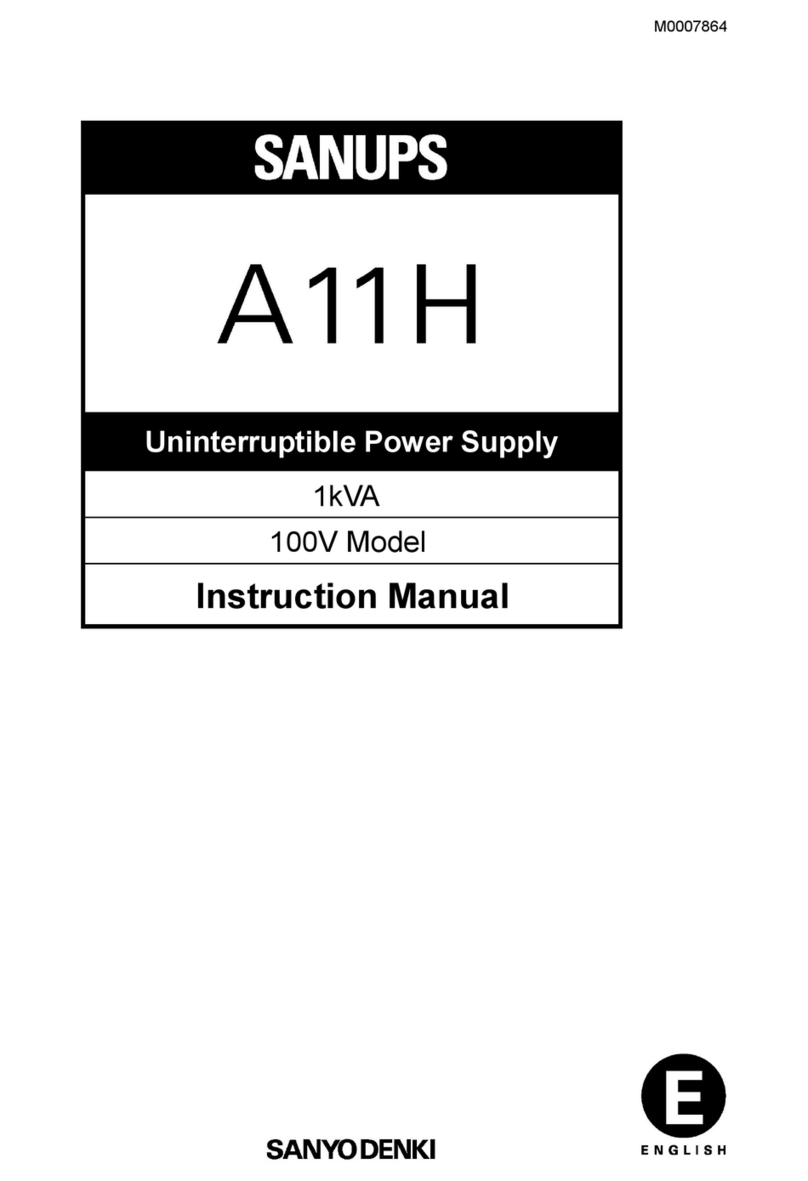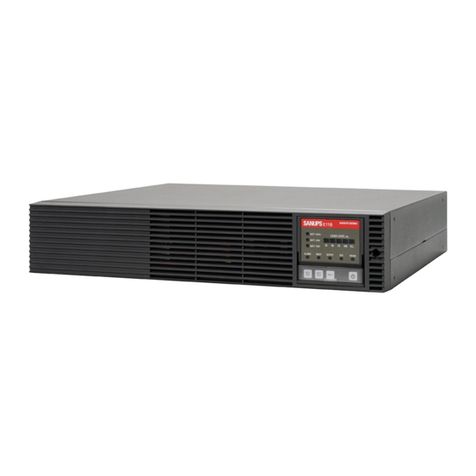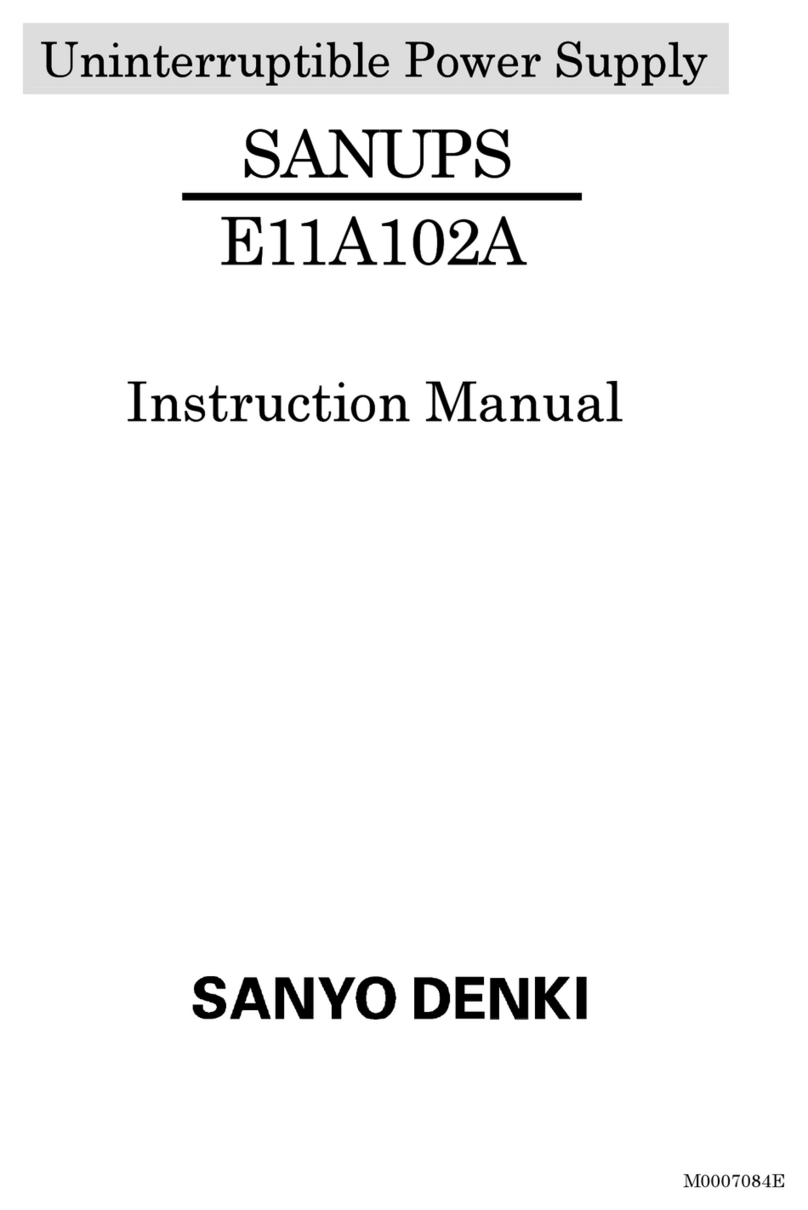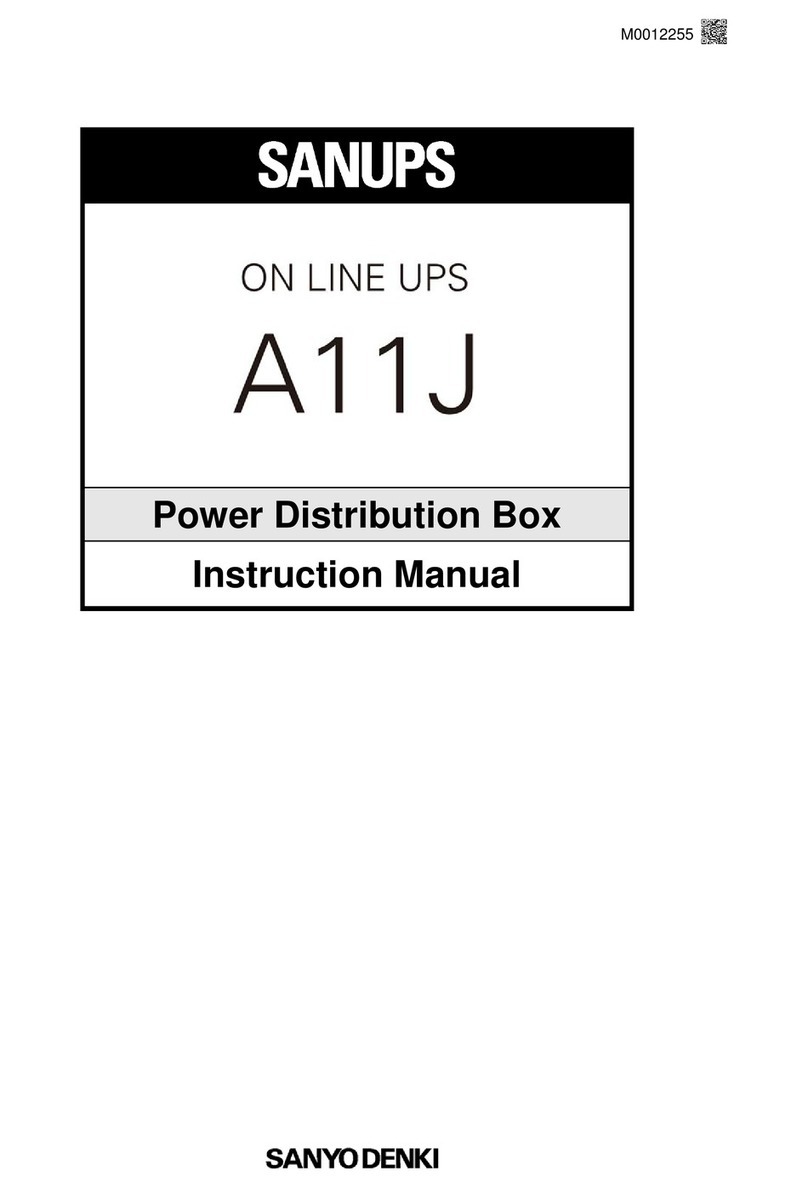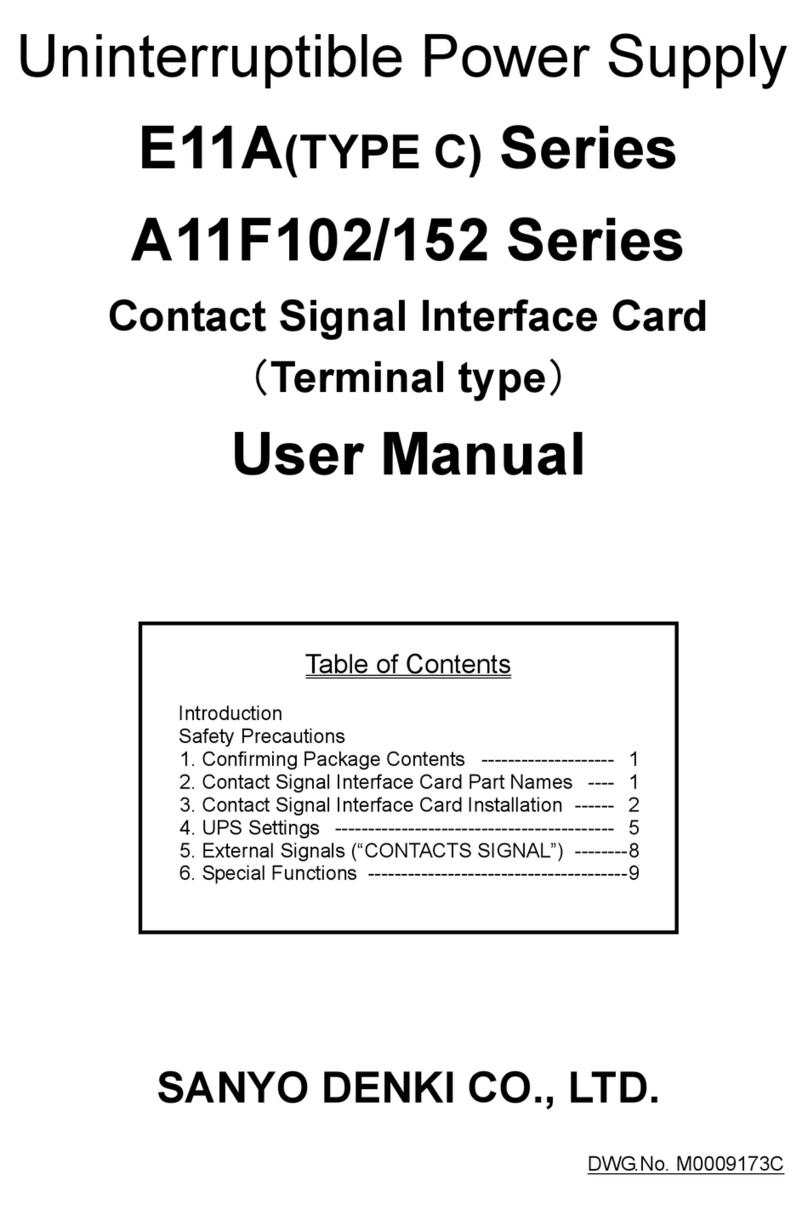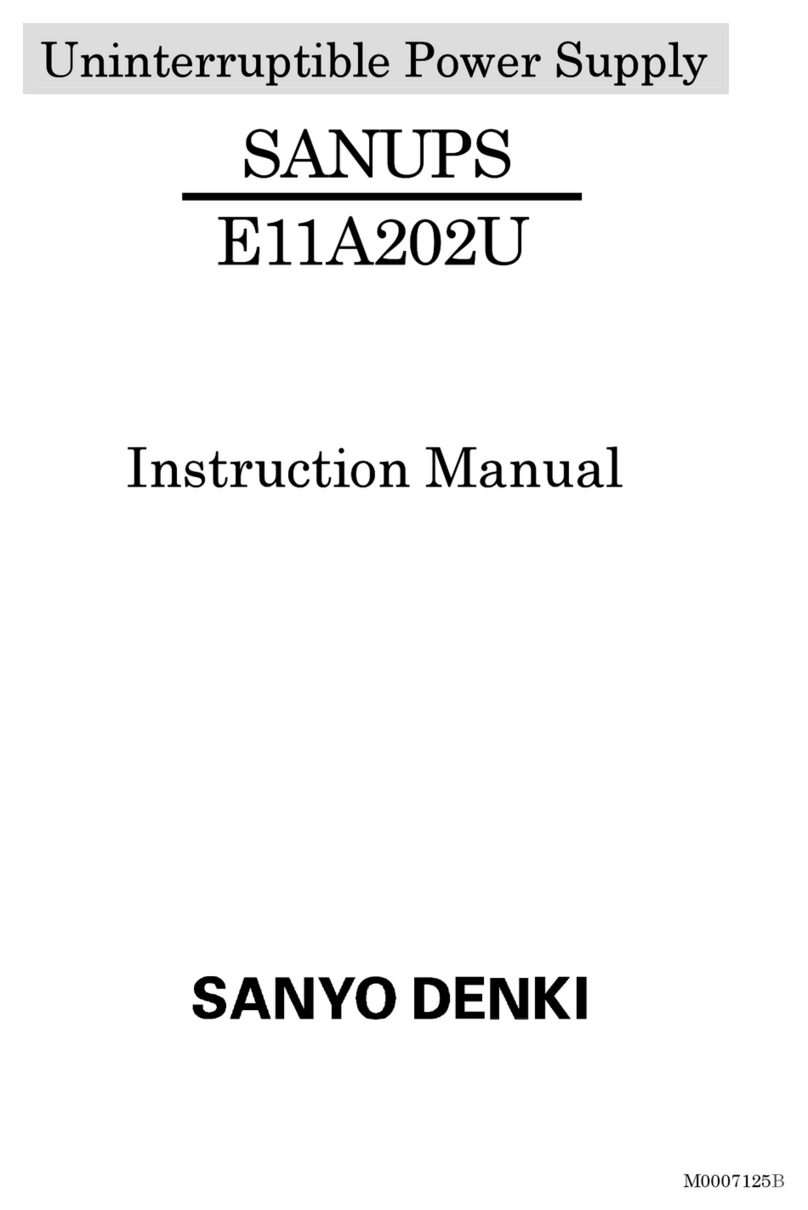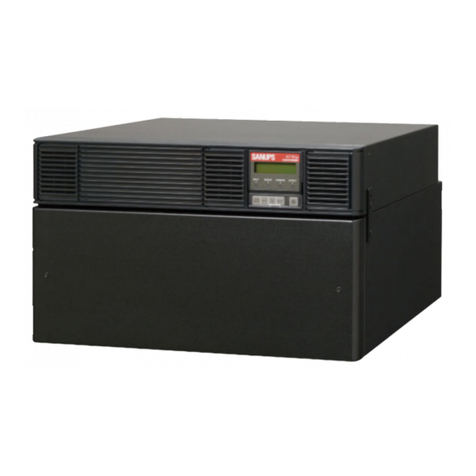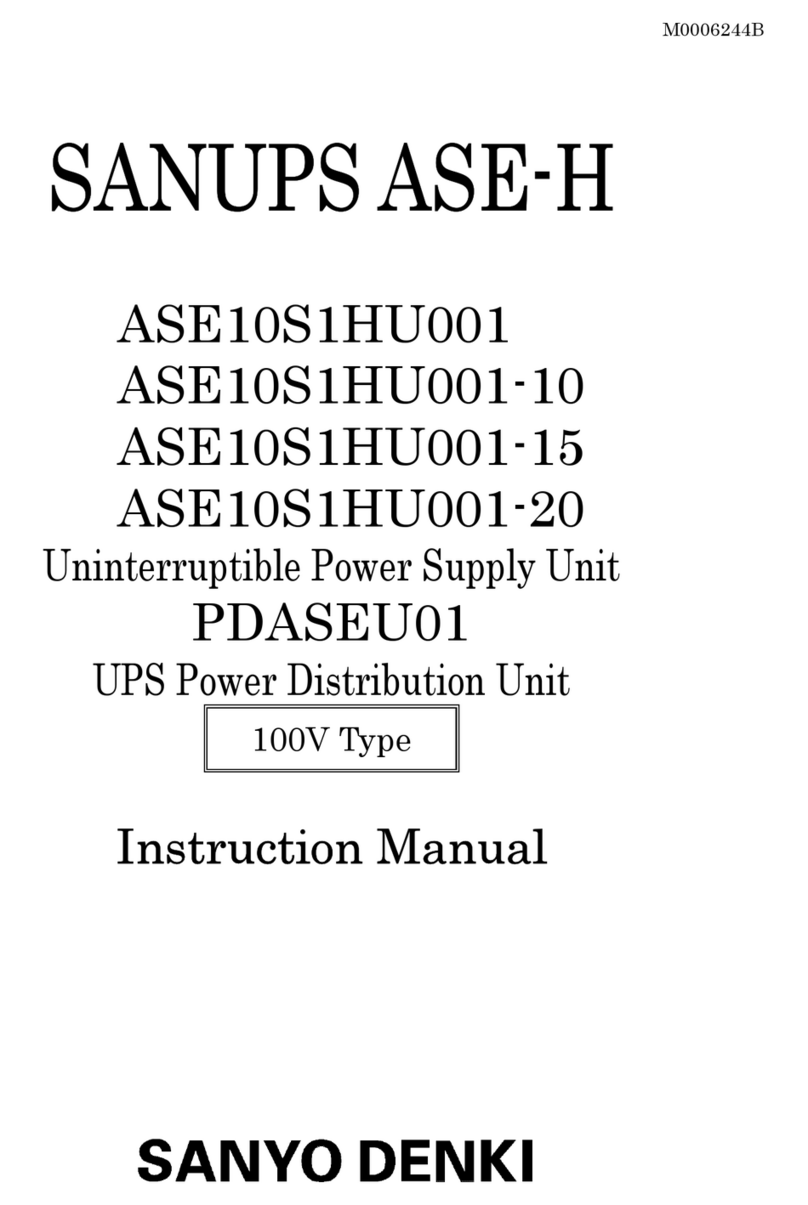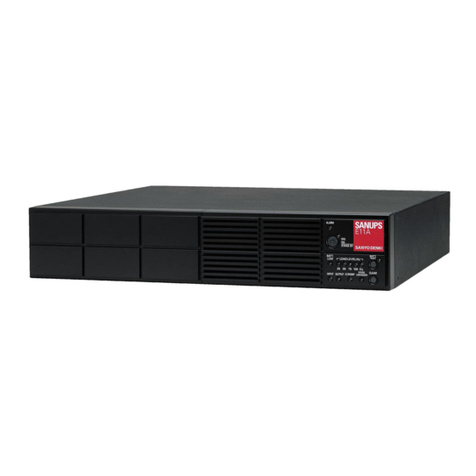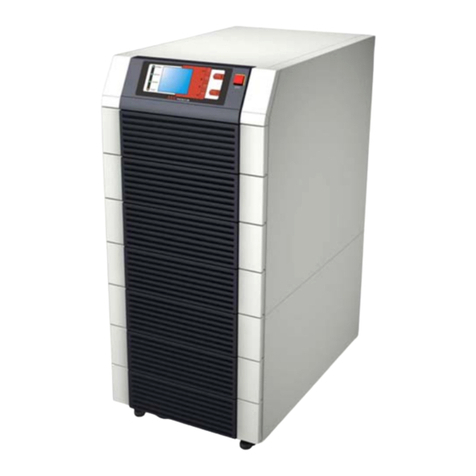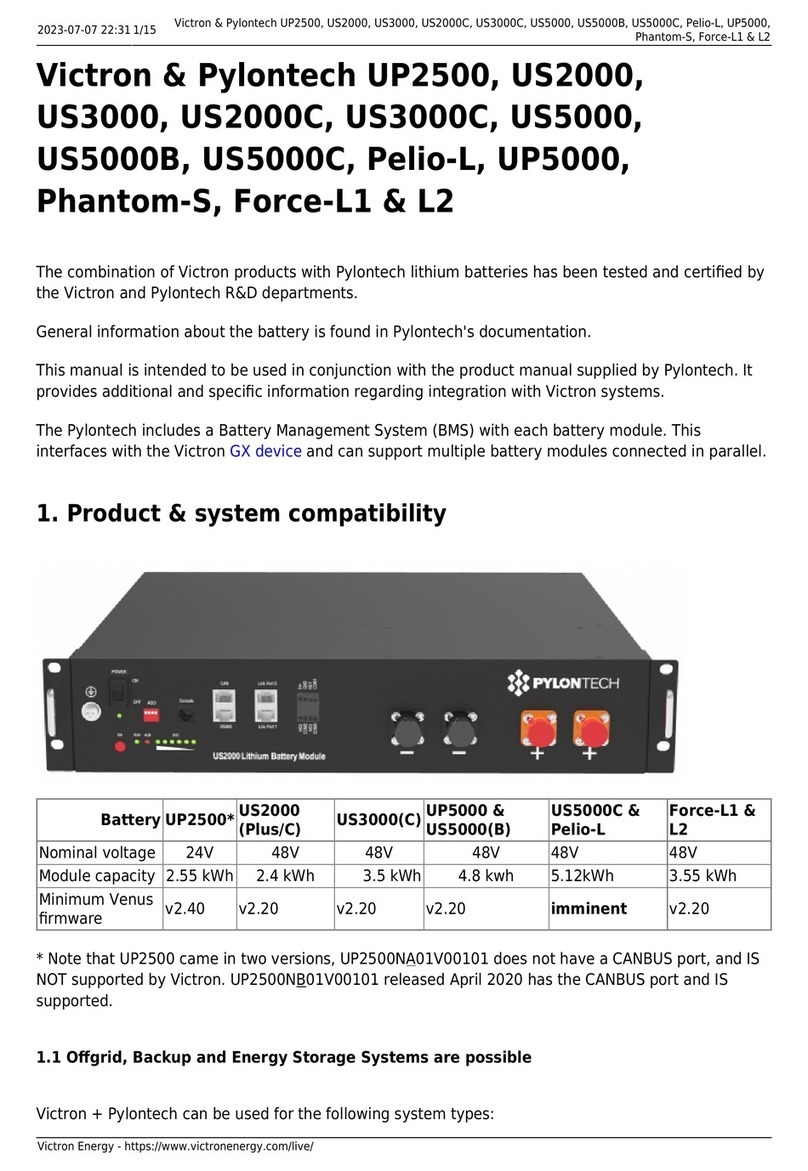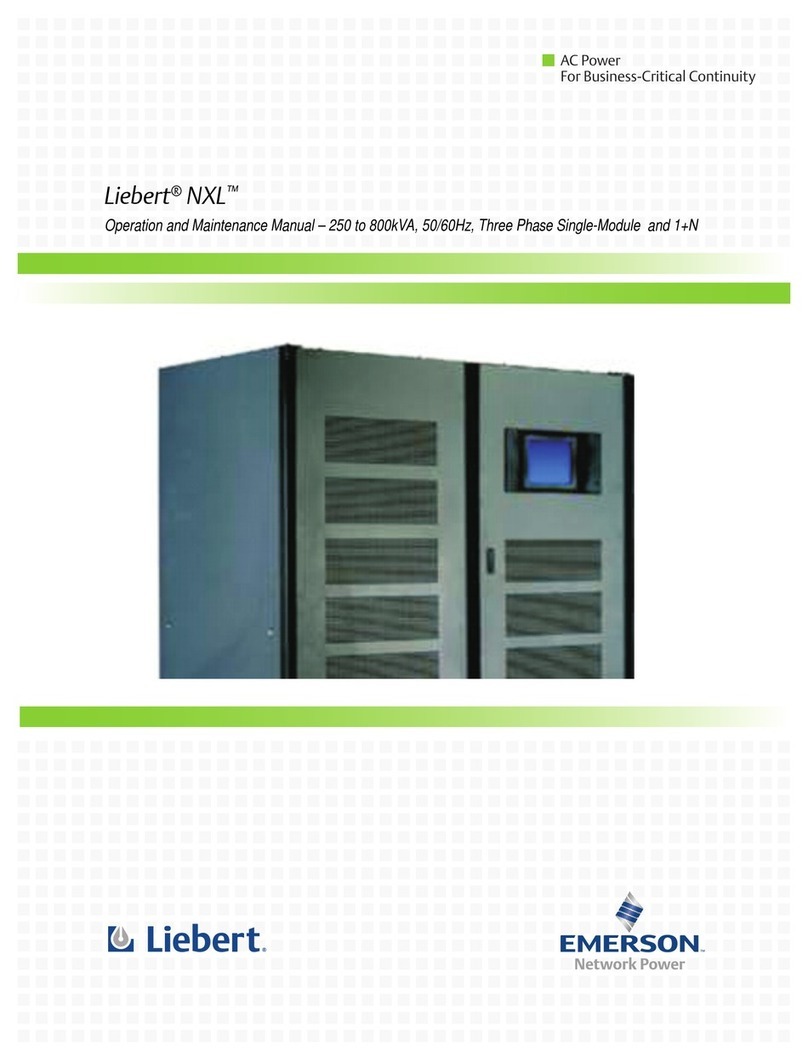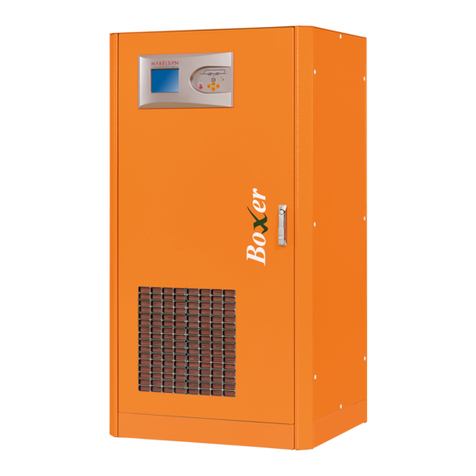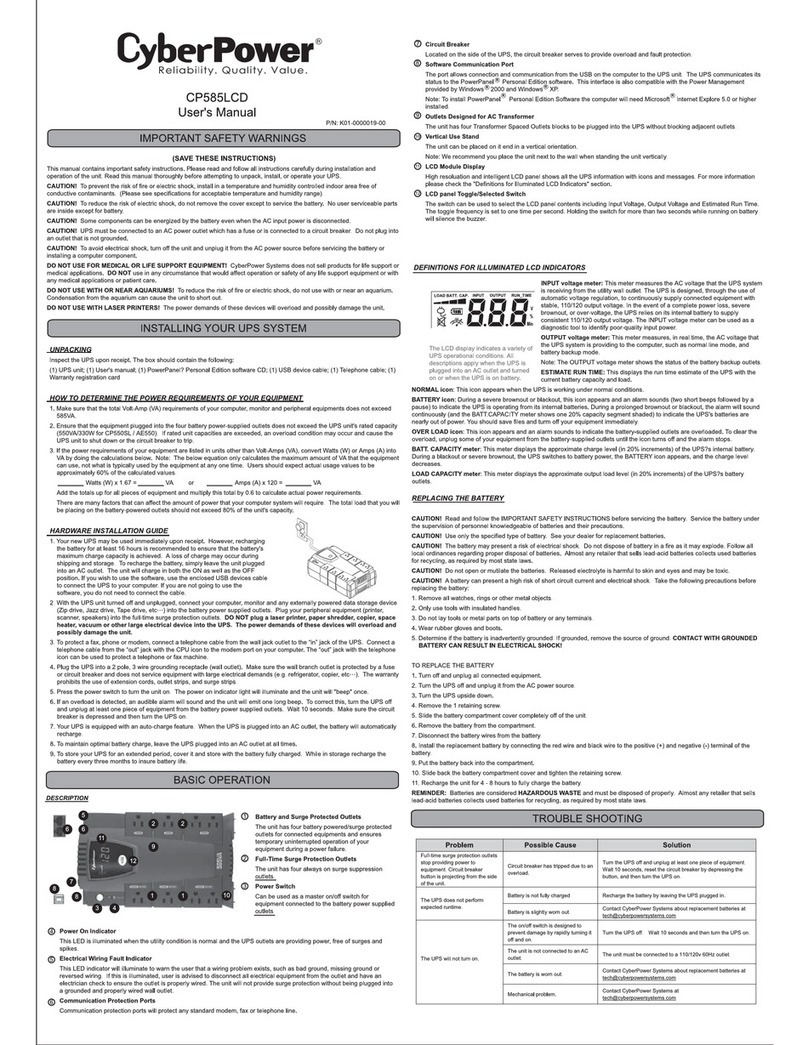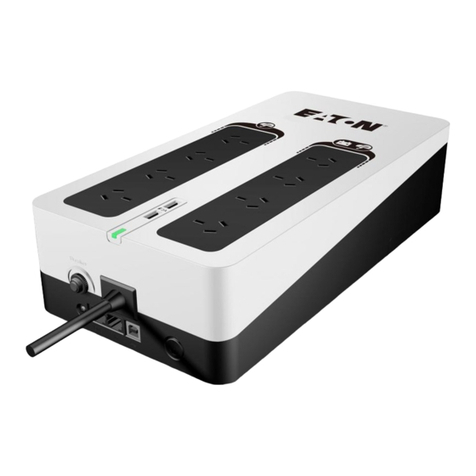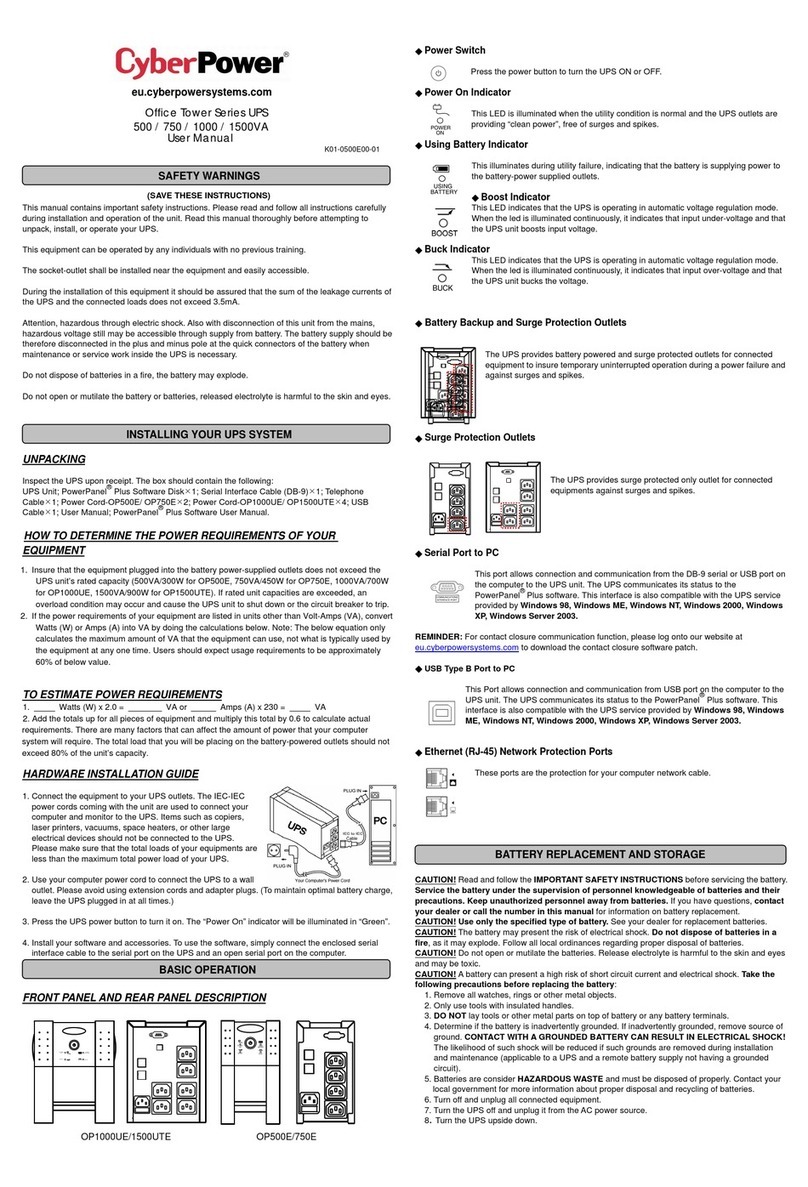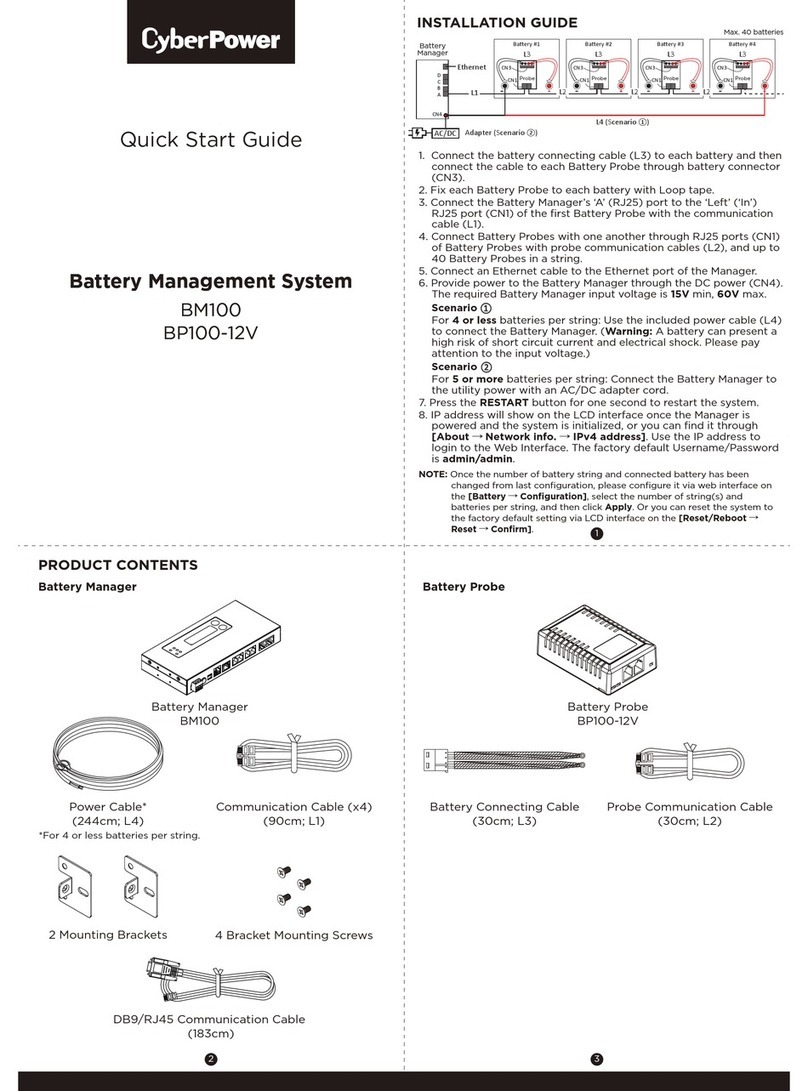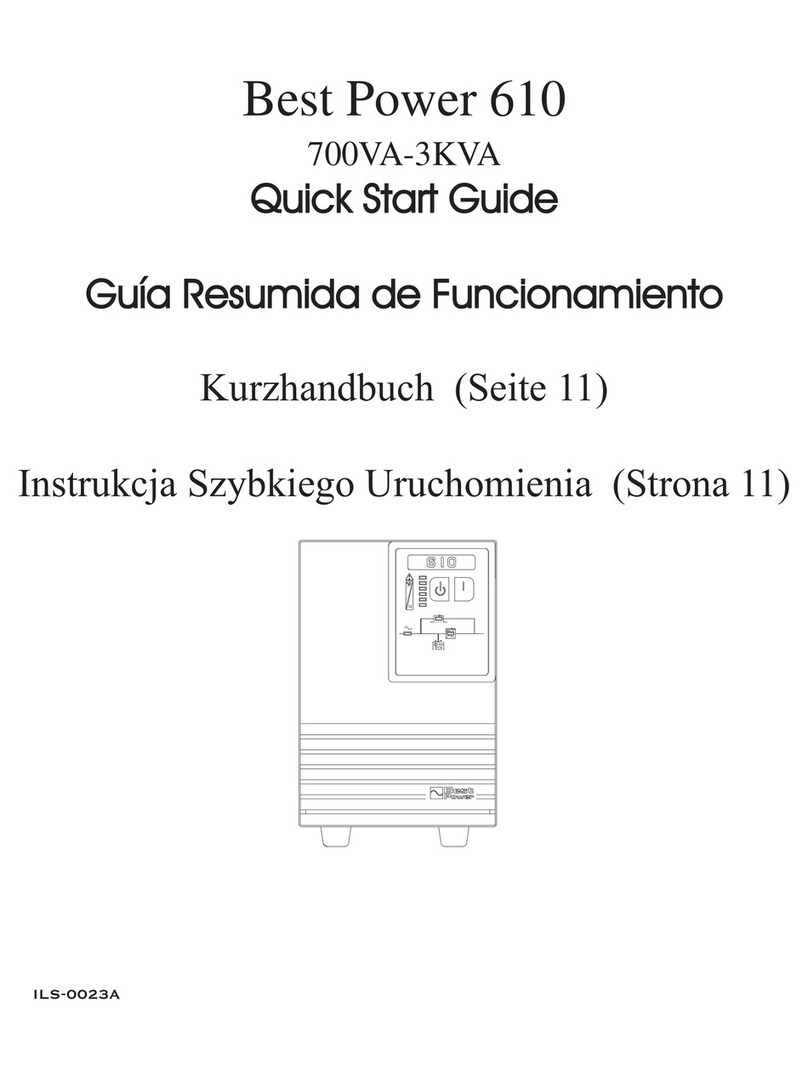Safety Precautions
5
6. Radio Frequency Interference
CAUTION
This equipment has been tested and found to comply with the limits for a Class A digital device, pursuant to
part 15 of the FCC Rules. These limits are designed to provide reasonable protection against harmful
interference when the equipment is operated in a commercial environment. This equipment generates, uses,
and can radiate radio frequency energy and if not installed and used in accordance with the instruction
manual, may cause harmful interference to radio communications. Operation of this equipment in the
residential area is likely to cause harmful interference in which case the user will be required to correct the
interference at his own expense.
7. Battery Handling Precautions
CAUTION
Battery servicing should be performed by technically qualified personnel. Keep unqualified personnel away
from batteries. *
Replace batteries only with the same model and brand: HRL1234WF2FR manufactured by CSB BATTERY Co.,
LTD. Risk of explosion if battery is replaced by an incorrect type.
The batteries in this product are lead type batteries which are a reusable resource. Please cooperate by
recycling when replacing or disposing of used batteries. Dispose of used batteries according to the instructions.
Customers should not dispose of used batteries themselves. To dispose of used batteries, contact your nearest
sales representative, an authorized industrial waste handling company, or repack them in their original cartons
and send them to your supplier or SANYO DENKI.
Do not use batteries after their service life has expired. Doing so may result in fuming or fire. Additionally, the
battery backup function may fail to operate with such batteries, so that power will not supplied to the load
when a power outage occurs.
Batteries pose hazards for electrical shock and dangerous short-circuit current. The following precautions
should be observed when working with batteries.
a.
Remove watches, rings and other metal objects.
b.
Use insulated tools.
c.
Wear rubber gloves and boots.
d.
Do not lay tools or metal parts on top of batteries.
e.
Disconnect the charging source prior to connecting or disconnecting battery terminals.
f.
Determine whether the batteries have been inadvertently grounded, and if so, remove the source of
grounding. Contact with any part of a grounded battery can result in electric shock.
Do not attempt to open or disassemble batteries. The electrolyte is harmful to the skin and eyes. The battery
contains diluted sulfuric acid, which is extremely toxic. If a battery leaks, take appropriate measures to prevent
any battery fluid contacting your skin or clothing. Diluted sulfuric acid may cause blindness if it gets into the
eye, may burn skin upon contact. It is electrically conductive and corrosive. Observe the following procedures if
electrolyte spills:
a.
Wear full eye protection and protective clothing.
b.
If sulfuric acid contacts the skin, wash it off immediately with water.
c.
If sulfuric acid contacts the eyes, flush thoroughly and immediately with water, and seek medical
attention.
d.
Spilled sulfuric acid should be washed down with a suitable acid-neutralizing agent, such as a solution
of approximately one pound (500 grams) bicarbonate of soda in one gallon (4 liters) of water. The
bicarbonate of soda solution should be applied until evidence of reaction (foaming) has ceased. The
resulting liquid should be flushed with water and the area dried.
Lead acid batteries can present a risk of fire due to generation of hydrogen gas. The following procedures
should always be followed:
a.
DO NOT SMOKE when near batteries.
b.
DO NOT allow flames or sparks near batteries.
c.
Before working with batteries, discharge static electricity from the body by first touching a grounded
metal surface before touching the batteries.
If a fire occurs near a battery, do not use water to extinguish it. Use only a powder-distinguishing agent (ABC).
Using water can cause the fire to spread.
Do not dispose of batteries in fire, as they could explode.
Strictly observe the following precautions when handling the batteries. Failure to do so may cause battery
leakage, overheating or explosion.
a.
Do not solder to any part of the battery directly.
b.
Do not charge the battery with reversed positive (+) and negative (-) terminal polarity.
c.
Do not mix different battery types, brands or versions.
d.
Do not attempt to peel off or break the outer covering of a battery.
e.
Do not subject batteries to strong physical shock, or throw them away.
f.
Clean batteries with water-moistened cloth squeezed hard. Do not use organic compounds such as
gasoline, thinner, benzene or detergent.
g.
Electrical energy may remain in a battery even after its service life has expired.
Do not allow sparks near used batteries, and protect them from short-circuiting.
* The user may replace the battery only when the UPS is not used as a product which complies with UL standards or CE marking.
!
!
!



